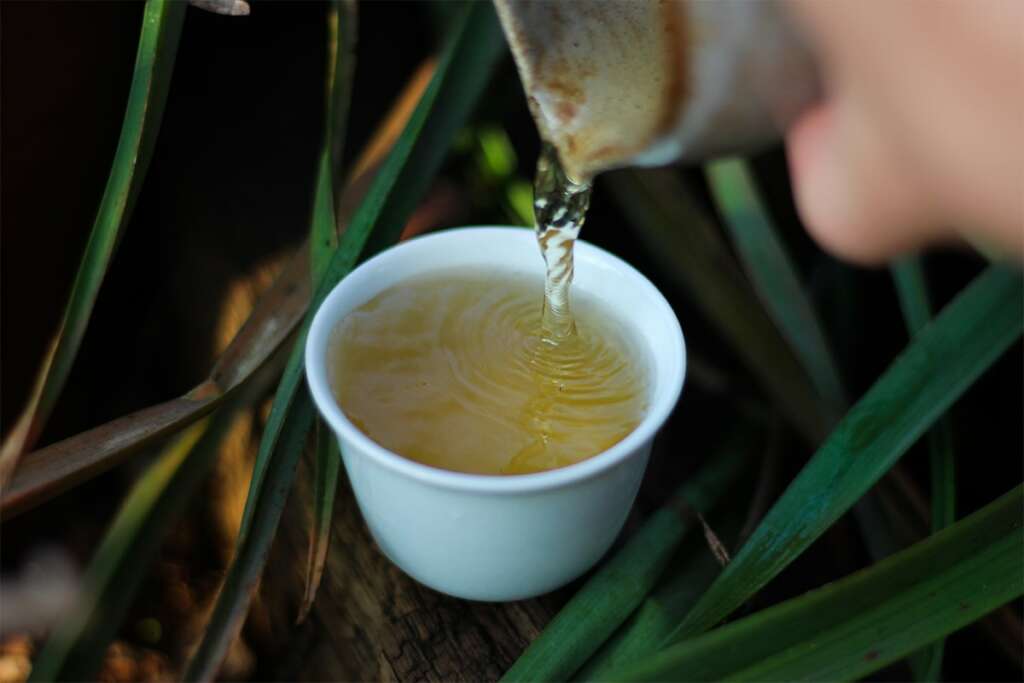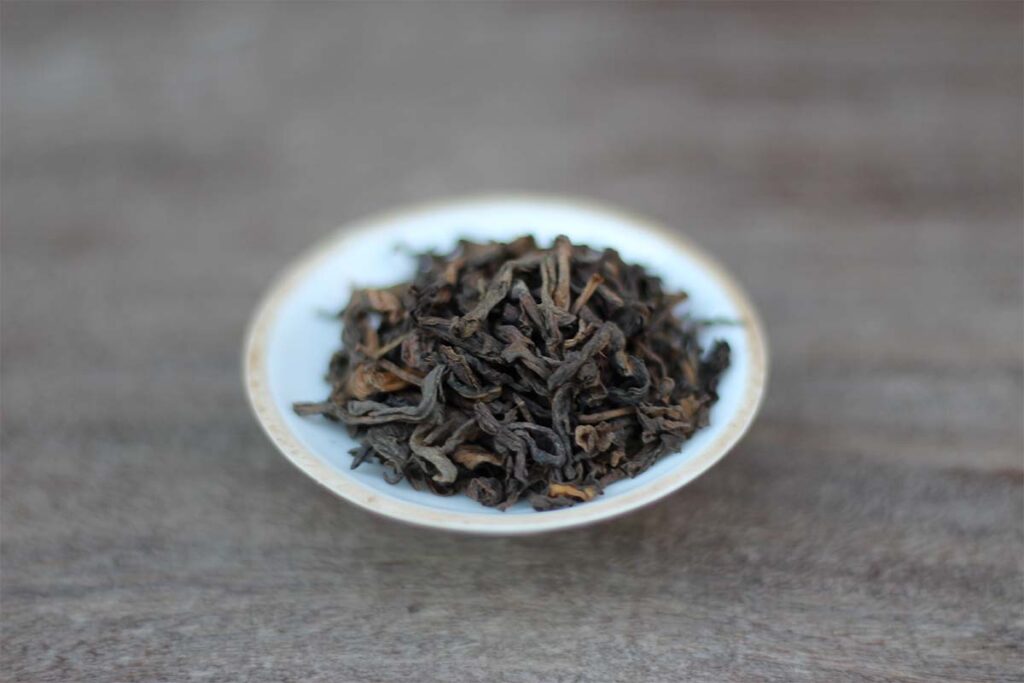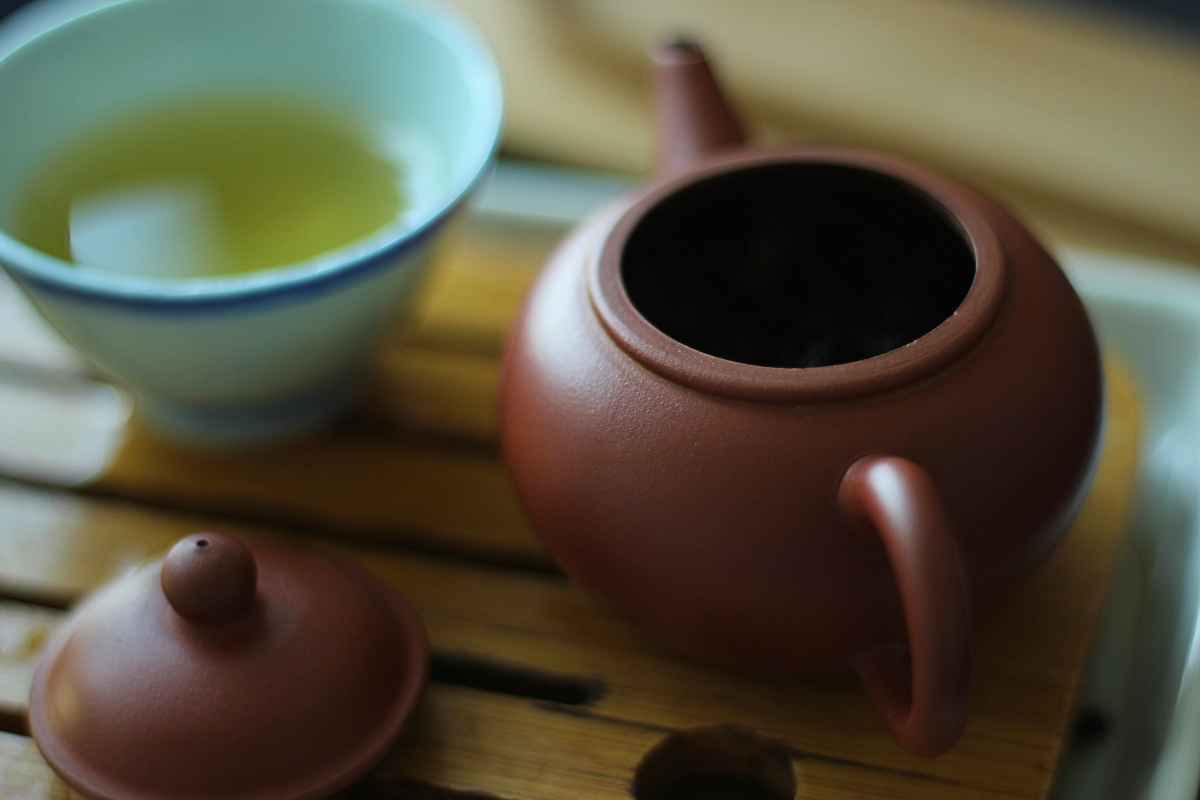People who are getting into pu-erh tea have come across the two main types: sheng and shou pu-erh. This distinction can be confusing at first, but the difference is quite simple. This article discusses the main differences and explains why sheng pu-erh and shou pu-erh are a category of tea on their own.
The difference between sheng and shou pu-erh is artificial fermentation. Sheng pu-erh is not artificially fermented before it is pressed into tea cakes or before it is packaged, while shou pu-erh is artificially fermented to speed up the aging process. This results in different colors of the leaves and liquor, different flavors, and a difference in leaf shape and size.
Sheng and shou pu-erh tea
The two main types of pu-erh tea are sheng pu-erh and shou pu-erh tea. However, there are several different names to refer to these types of tea. The most common names are:
Sheng:
- Raw pu-erh
- Raw puerh
- Uncooked puerh
- Uncooked pu-erh
- Young pu-erh (if fresh sheng pu-erh)
- Young puerh (if fresh sheng pu-erh)
- Aged pu-erh (if aged sheng pu-erh)
- Aged puerh (if aged sheng pu-erh)
Shou:
- Shu pu-erh
- Shu puerh
- Cooked pu-erh
- Cooked pu-erh
- Ripe pu-erh
- Ripe puerh
- Ripened pu-erh
- Ripened puerh
Sheng pu-erh
Sheng pu-erh is pronounced as ‘shung pu-erh’ and literally means raw pu-erh. This implies that it is not artificially fermented. The tea leaves are picked, withered, heated to slow down oxidation, and sun-dried. These four steps create unfinished tea, which is called ‘mao cha’. The tea leaves are then packaged or pressed into a variety of shapes.
Sheng pu-erh is the type of tea that has the longest history of the two. There is evidence that sheng pu-erh tea has been transported since the Tang Dynasty (618-097) and that is also when people discovered that this tea improves with age.

Don’t know where to buy tea online? I made a list of over 300 online tea shops and I keep updating it regularly. You can check it over here
Sheng pu-erh tea ages in cycles of 5-7 years and it takes around 70 years to reach full maturity. It takes a very long time for sheng pu-erh to reach maturity, which is one of the reasons aged sheng pu-erh is so expensive. Aged sheng pu-erh looks really dark and seems similar to shou pu-erh, but it’s much more complex flavor-wise.
Shou pu-erh
Shou (or shu) pu-erh is pronounced as ‘sho/shoe pu-erh’ and is translated as cooked pu-erh. This tea is artificially fermented and during this process, the tea leaves get really hot. This is where the name comes from. The tea is dumped onto piles and temperatures increase quite a bit inside these piles. That is how the tea leaves are cooked.
Artificial fermentation occurs after picking, withering, heating (to slow down oxidation), and sun-drying the tea leaves. This process started in the late 1960s and the first official sale of shou pu-erh was in 1973 by Kunming Tea Factory. Tea factories wanted to recreate the effect time has on raw pu-erh by artificially fermenting the leaves. This did not work out how they wanted and they created a new subcategory of tea.
Difference between sheng and shou pu-erh
Now you have a basic understanding of what sheng and shou pu-erh are, it’s time to talk about the differences. The main differences are artificial fermentation, different colors of the leaves and liquor, the difference in flavors, and the different sizes of the tea leaves.
Artificial fermentation
The main difference between raw and ripe pu-erh is artificial fermentation. Tea leaves for sheng pu-erh are packaged or compressed into tea cakes after sun-drying. There is fermentation, but it occurs naturally over time.
Tea leaves for shou pu-erh are piled and sprayed with water in a hot and humid environment. Sometimes a thermal blanket is used to increase temperatures for better and faster fermentation. They also add a bacterial sample from previous batches of shou pu-erh to kickstart the fermentation process.
This artificial fermentation process is described as wo dui (wò dūi or 渥堆 in Chinese) and is a crucial step in creating shou pu-erh. If this doesn’t happen, it’s not really shou pu-erh we’re talking about.
Different color of the leaves and liquor
Young sheng pu-erh brews a very light color because the leaves are basically unfermented. That is why the tea leaves have a green color. Fermentation takes place over time and 1, 2, or 3 years is not enough to make a significant change in the color of the liquor.
This is a big contrast with aged sheng pu-erh, which brews a really dark and deep cup of tea. Time has done its thing and fermentation has taken place. Keep in mind that storage conditions also play an important role in the degree of fermentation. However, a general rule of thumb is that the older sheng pu-erh gets, the darker it becomes.



Shou pu-erh brews a dark and steamy cup of tea right after production. Piling flavors are usually present in fresh shou pu-erh, but the color of the liquor is almost like coffee right from the start. Fermentation has occurred because of the wet piling. Nowadays, fermentation is usually around 100% when the tea is finished. In the past, it was more common to not fully ferment shou pu-erh and let it age naturally for a while.
Different flavors
Another difference between sheng pu-erh and shou pu-erh is the difference in flavors you get. Shou pu-erh was created in an attempt to imitate the effect time has on sheng pu-erh. Nothing can achieve the same effect as 70 years of natural fermentation so they created a new subcategory of tea.
Young sheng pu-erh, aged sheng pu-erh, and shou pu-erh each have their own distinct flavor profiles. Young sheng is usually fresh, green, wild, and fruity. Aged sheng pu-erh has deeper flavors of camphor, wood and there is a certain earthiness as well. Shou pu-erh has notes of mushrooms, wet earth, damp forest, and wet caves to it.

These are generalizations, but you get the idea. The flavors in aged sheng and shou seem similar at first, but aged sheng pu-erh is deeper, richer, and has a lot more subtleties.
Difference in leaf shape and size
Because of the artificial fermentation, leaves that are used for shou pu-erh are usually (but not always) smaller than leaves for sheng pu-erh and they also have a different shape. The piling process requires that the leaves are turned on a regular basis and that the piles are stirred often to get equal fermentation.


This is the main reason that most leaves get damaged and broken during the wet piling process. If the piles are not mixed and stirred regularly, some leaves would be fermented too much, while other leaves would not be fermented enough.




